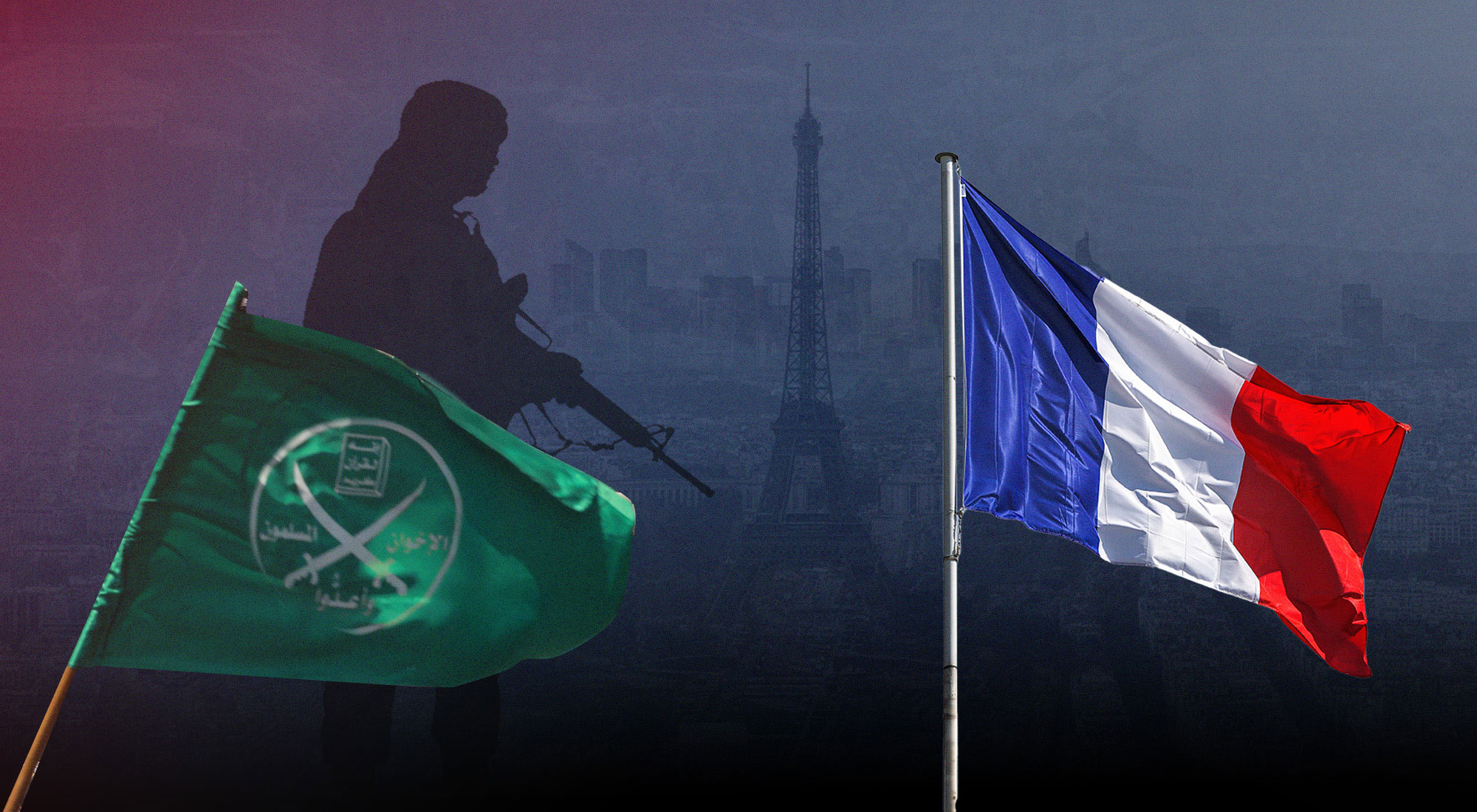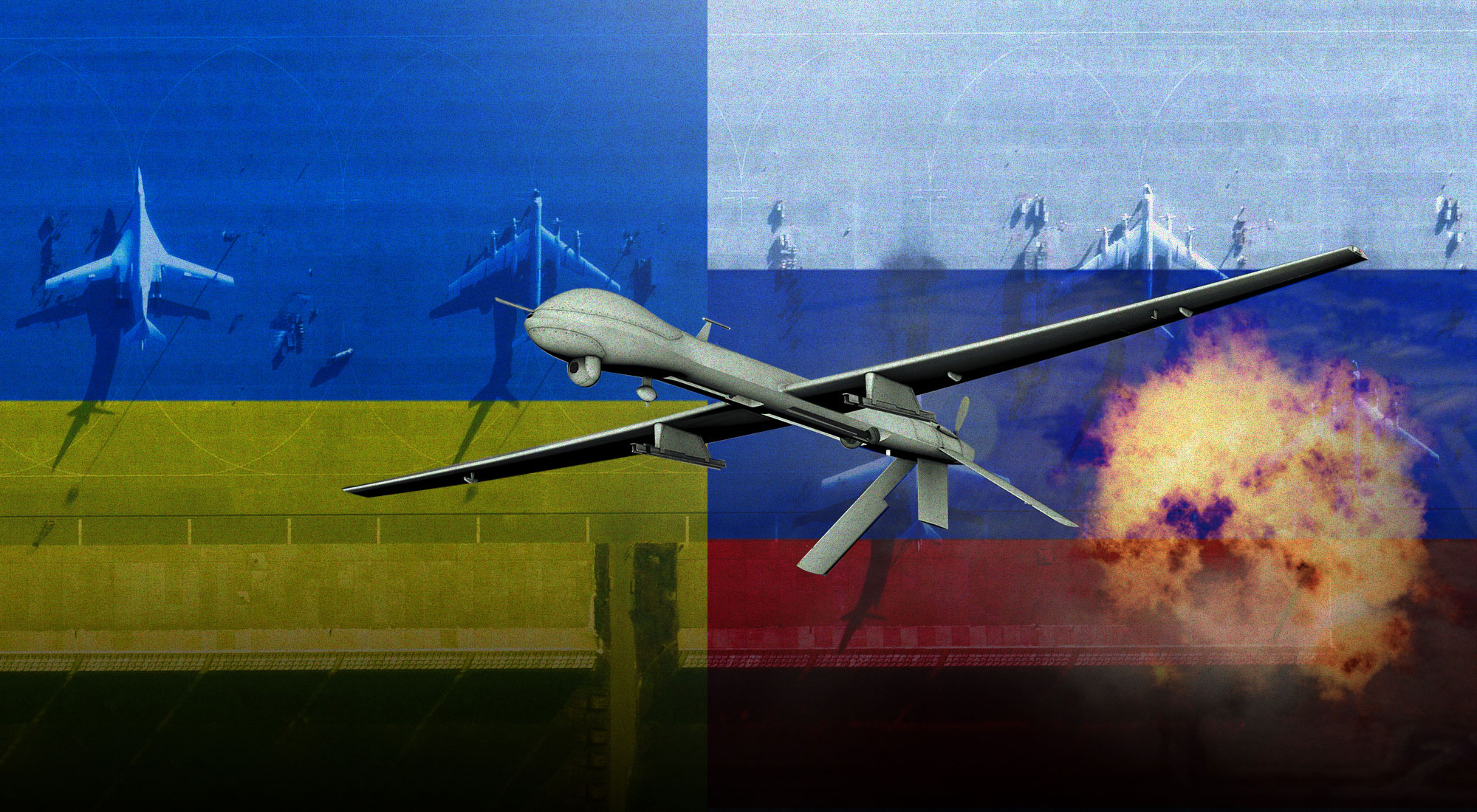Introduction
The types and quantities of weapons, alongside other material support, nations have been willing – or unwilling, in some cases – to send to Ukraine for its defense is one of the most contentious issues in transatlantic politics today. Some supporters of Ukraine resistance have castigated various European nations, such as France and Germany, for providing too little succor and for their hesitancy in sending heavy weapons, such as tanks, that the Ukrainians claim are essential. Others, however, have cautioned against transferring “big ticket” items to Ukraine like fighter aircraft or long-range artillery lest they result in escalation of the conflict beyond Ukraine’s borders.
In the days immediately following the start of Russia’s “special military operation” in Ukraine, discussions in Western capitals and elsewhere about sending arms to Ukraine were predicated on the belief that the government may have to abandon the capital and large tracts of territory. For this reason, much of the planning focused on the provision of light weapons useful for a general resistance by a Ukrainian population under a Russian occupation. Against many analysts’ expectations, Kyiv held and Moscow’s attempt at rapid regime change failed. Consequently, the Kremlin’s war aims shifted to making territorial gains in the northeast and southeast of the country. The conduct of the war has changed drastically in more than a hundred days of fighting and so has the military materiel Ukraine needs to provide an effective defense against Russia’s military machine and especially its overmatch in artillery.
Put simply, Ukraine would not have been able to stay in the fight as long as it has without the influx of weapons it has received, especially from the United States and some of its key European backers such as the UK, Poland, and the Baltic states. The arms Ukraine has most needed has changed over the course of the fighting and is likely to change further as the war enters its next stages.
Nations supporting Ukraine have been sending ever more sophisticated and offensive weaponry. Yet, what Kyiv’s backers are willing to provide still varies considerably. Even Ukraine’s most ardent supporters have limits on what they are able, but more importantly, what they are prepared to supply to Ukraine. The politics surrounding what represents permissible arms to get into the hands of the Ukrainians has been a critical factor in Europe’s most serious conflict since 1945. The backstory of the politics of arming Ukraine – which began many years before the Kremlin gave the greenlight to Russian forces massed on the border to attack – can illuminate the parameters of what is possible in the coming weeks and months ahead.
Inoffensive security assistance
Western assistance to the Ukrainian military was massively stepped up after the Russian seizure of Crimea in 2014. The West – and at this stage primarily the United States – subsequently poured millions of dollars into security assistance for Ukraine in the years after the 2014 Maidan protests and the Kremlin orchestrated takeover of Crimea.[1] This early support included the delivery of a number of weapon systems and security assistance packages to train the Ukrainians in their use. Even at this stage, diplomatic sensitivities regarding Moscow acted to moderate the early provision of U.S. military aid. Assistance was limited largely to non-lethal equipment, including unarmed drones, counter-mortar radars, night vision devices, and armored Humvees. Weapons that might be perceived as enhancing Ukraine’s offensive capabilities were deemed too provocative.
In practice, it is inherently difficult to distinguish what is a purely offensive weapon. Weapons that might be conceivably useful for defense, such as man-portable anti-tank missiles, might also be very effective when employed in an offensive role. Indeed, from 2017 onwards, the U.S. began providing larger quantities of lethal assistance to Ukraine, including Javelin anti-tank missile systems – a rather sensitive defense technology that held symbolic significance for both Russia and Ukraine. It had generally been reserved only for close U.S. allies and NATO members.[2] These ostensibly defensive weapons were, in Russian eyes, quite provocative.
As Russia increasingly looked poised to attack in early 2022, Western efforts to equip Ukraine’s military amplified. The United States, for instance, delivered $650 million in security assistance beginning in March 2021. This included a package of anti-air and anti-armor weapons. These preemptive supplies were not intended to deter aggression but to give the Ukrainians some means to offer resistance and to prolong defeat. “So, when the invasion began,” U.S. President Biden noted afterwards, “they [the Ukrainians] already had in their hands the kinds of weapons needed to counter Russian advances.”[3] Once Russia’s “Special Military Operation” was underway, the U.S. sent an additional urgently needed arms package, including Stinger man-portable anti-air missiles, more Javelin anti-tank missile systems, tactical unmanned aerial vehicles (UAVs), and other materiel.
Against the grain of much informed opinion, Ukraine offered stiff resistance to the Russian military, thwarting Moscow’s attempts to seize the capital and topple the Zelensky government. The Kremlin – as did other observers – grossly miscalculated Ukrainians’ will to fight. Their desire to mobilize the nation in order to absorb more attacks and perhaps even shift from defensive operations to regaining territory now under Russian occupation was certainly not anticipated. To be sure, the Ukrainian military and mobilized citizens made good use of what they had to hand, including the myth-making Bayraktar TB2 tactical armed drone from Turkey[4] and American-made Switchblade loitering munitions.[5] To take the fight to the Russian armed forces, they would need more than high morale, pluck, tactical adaptiveness, and light arms; they would need heavier weapons.
Open up your arsenals!
Whilst welcoming assistance from the U.S. and other allied nations, the Ukrainian government pleaded for greater supplies of weapons and even a no-fly zone over the country. The latter request was quickly ruled out on political grounds. Most Western leaders shuddered at the escalatory potential of NATO warplanes engaged in dogfights with their Russian counterparts. Ukraine’s backers were, however, prepared to walk the tightrope of supplying Ukraine with enough weapons to avoid defeat, without provoking Russia into overt retributive action. As the war showed no sign of ending and Ukraine’s pre-war stocks of weapons were quickly depleting, Ukrainian President Volodymyr Zelensky and his government appealed to friends – old and new – for more weapons and supplies.
In the weeks after the start of the war in late February, Zelensky repeatedly emphasized the country’s need for heavy weapons like tanks, artillery, and rocket launchers. By the end of March, however, only the U.S., Estonia and Poland had sent heavy weapons to Ukraine. Other Western countries remained more hesitant, electing to limit their support to infantry weapons or portable anti-tank weapons. A wariness not to provoke President Putin to take more drastic measures remained in some European capitals. Indeed, in April, Russia had sent a formal diplomatic note to the United States warning that U.S. and NATO shipments of the “most sensitive” weapons systems to Ukraine were “adding fuel” to the conflict there and could bring “unpredictable consequences.”[6]
Reluctance to send heavy weapons began to change over the course of April. This shift coincided with greater confidence in Ukraine’s ability to counter Russian forces. An increasing number of governments, including Canada, Czech Republic, Australia, France, Belgium, Germany, Netherlands, Denmark, Lithuania, Spain, Portugal, Slovakia, and Latvia committed to send heavy weapons to Ukraine.[7] In these early months of the war, several Eastern European nations sent much of their Soviet-era kit to Ukraine. Washington had worked for years to get former Warsaw Pact countries to replace their Soviet-era equipment with NATO-compatible kit. To facilitate the transfer, the U.S. and other Western European NATO members offered to “backfill” the Soviet-era weapons these governments donated.[8] The U.S. initially worked on an arrangement with Poland on supplying its MiG-29 fighter aircraft fleet to Ukraine. The plan, which was later abandoned, would have involved the U.S. supplying additional F-16 jets to Poland to compensate for the loss of the MiG-29s. In desperate need of more aircraft and spare sparts, the Ukrainian air force has so far not benefitted anyway near as much from arms supplies as land forces have.[9]
Despite this opening up of some Western states’ arsenals, a significant gap emerged between arms deliveries and what Ukrainian government officials and senior military commanders believed they needed. Mykhailo Podolyak, adviser to the president of Ukraine, wrote on 13 June that Ukraine needed 1000 155mm howitzers, 300 multiple launch rocket systems (MLRS), 500 tanks, and 2000 armored vehicles “to end this war.”[10] But before Ukraine could contemplate about “winning” the war, its most pressing need was get the means to compete with Russian artillery.
Artillery dueling
In the months following Moscow’s military setback in February and March, the Russian armed forces had reverted to their traditional concentration on artillery in an effort to attrite Ukraine’s dug-in forces.[11] Kyiv desperately called for more artillery to counter the rain of fire being brought down upon them. Ukrainian Minister of Defense Oleksii Reznikov claimed that Ukraine needed at least 100 MLRs.[12]
The U.S. increasingly provided more powerful, longer-range weapons to the Ukrainian forces as they worked to defend themselves against a barrage of Russian artillery.[13] But US officials were also trying to strike a balance between sending Ukraine effective weapons, while not escalating the conflict and risk fracturing a NATO coalition that was at its most unified in years.
In June, a $700 million U.S. security package included four M142 High Mobility Artillery Rocket Systems (HIMARS), which can fire up to 300km, but which the U.S. capped at 70km for the Ukrainians. Washington was initially wary of sending HIMARS due to the potentially escalatory risk the weapons posed if Ukraine were to use them to strike over Russia’s borders. While the U.S. got agreement from Kyiv that it would not fire into Russian territory, the nature of conflict means there is no real way to ensure such a strike does not happen.[14] The U.S. sent the M142 HIMARS about six weeks after it started providing 155-millimeter howitzers and ammunition. Since then, the United States has sent Kyiv over a hundred such howitzers and shipped hundreds of thousands of rounds of ammunition for them to fire. Since June, Ukraine has been supplied with dozens of advanced mobile launchers, both the aforementioned HIMARS from the U.S. and older American-made M270 launchers that Britain and Germany have provided.[15]
Long-range artillery supplied to Ukraine, especially the HIMARS, began to be decisive in this duel of fires. An adviser to General Valery Zaluzhnyi, Ukraine’s top commander, stated that “anti-tank missiles slowed the Russians down, but what killed them was our artillery. That was what broke their units.”[16] The power of indirect fire on enemy positions miles away should not be underestimated.[17] It proved crucial in paving the way for Ukraine’s dramatic advances in the northeast of the country over August and September.
Defending the skies
Over the course of the September offensive – first around Kherson and then more spectacularly in the vicinity of Kharkiv in the north – Ukrainian forces conducted impressive combined-arms operations. The Russian army, on the other hand, performed poorly; its forces displayed low morale and largely collapsed in the face of Ukrainian advances. Russian President Vladimir Putin’s announcement on 21 September to call up roughly 300,000 military reservists was a sign of the dire situation the Russian military found itself in.
In response to these military setbacks and the 8 October Ukrainian attack on the Kerch bridge linking the Crimean Peninsula with the Russian mainland, Moscow’s more immediate response was to turn to retributive missile and suicide drone attacks against Ukrainian cities and infrastructure. President Putin said he had ordered the “massive” long range strikes on 10 October after the attack on Kerch bridge. “To leave such acts without a response is simply impossible,” he said, alleging other, unspecified attacks on Russian energy infrastructure.[18] Attacks by Iranian-supplied Shahed-136 one-way attack drones along with Russia’s conventional precision-guided missiles have radically changed the emphasis of Ukraine’s immediate weapon needs, from artillery and tanks to air defense systems.
The Russians have launched hundreds of rockets at the major Ukrainian cities since 10 October. Ukrainian forces have had some success at shooting down the missiles, but they are asking for more air defense capabilities. Air defense does not come cheap, however. For every missile or aircraft knocked down, it is safe to assume that numerous interception missiles needed to be fired. France and Germany, two countries often criticized for their lackluster support to Ukraine relative to others, pledged to send air defense systems in the days after the attacks. “This is a new phase of bombing coming from land, sea, air and drones against essential infrastructure and civilians,” French President Macron said, adding that French radar and anti-air missiles would soon be delivered.[19] Paris and Berlin certainly have less qualms about sending air defense systems to protect civilians than they do about releasing tanks from their armories to transfer to Ukraine. But for others, supplying air defense systems remains too politically complicated. Israel has so far refused requests by Kyiv to supply Ukraine with the Israel-US-developed Iron Dome or other anti-missile systems.[20]
What’s next?
Keeping these air defense supplies coming in and increasing the integration of the air defense picture with them is key for Ukraine in the coming weeks and months. Beyond the immediate need to defend its cities and population from aerial bombardment, Ukraine will also require its Western backers to keep up a steady supply of weapons and ammunition if it is to maintain the initiative in the war. Kyiv is hoping that European populations in particular do not lessen their support during a winter of high energy costs and increasingly tough economic conditions. In practical terms, Ukraine’s backers cannot maintain the level of supplies they have been providing; they simply do not have the stocks to spare. Moreover, these efforts to arm Ukraine’s defense have exposed the weakness of NATO countries’ defense industrial bases. The capacity to ramp up defense production simply does not exist.
Through repeated actions over recent months, the Kremlin has demonstrated that it will not walk away from its war in Ukraine and is willing to take extraordinary measures – most notably the partial mobilization – to keep fighting. Similarly, Ukrainian resolve to continue fighting has been clear for all to be seen. The Zelensky government has constantly reiterated that nothing short of the return of all Ukraine sovereign territory – including, perhaps, the Crimean Peninsula – will end this war. Given these dynamics, there is no end in sight for the conflict. The character of the war will change again as it enters the bitterly cold winter months and Russia’s mobilized reserves are sent to the frontline. Whether the political will continues to exist among Ukraine’s backers to keep arming Ukraine at sustainable levels will be the deciding factor in shaping the war throughout the remainder of 2023 and into the following year.
References
[1] Elias Yousif, “U.S. Military Assistance to Ukraine,” Stimson Center, January 26, 2022, http://bitly.ws/vKgU.
[2] John Bowden, “Trump Gives Green Light to Selling Lethal Arms to Ukraine,” The Hill, December 20, 2017, http://bitly.ws/vKh4.
[3] Jim Garamone, “Biden Signs Order Transferring Arms to Ukrainian Defenders,” DOD News, March 16, 2022, http://bitly.ws/vKhb.
[4] Ash Rossiter, “Turkey’s Path to Drone Power,” Trends Research and Advisory, December 8, 2021, http://bitly.ws/vKhm.
[5] Stephen Losey, “Switchblade Kamikaze Drone Production to Ramp Up Following Ukraine Use,” Defense News, October 11, 2022, http://bitly.ws/vKhs.
[6] Karen DeYoung, “Russia Warns U.S. to Stop Arming Ukraine,” The Washington Post, April 15, 2022, http://bitly.ws/vKhz.
[7] Arianna Antezza, André Frank, Pascal Frank et. al., The Ukraine Support Tracker: Which Countries Help Ukraine and How?, Kiel Working Paper No. 2218, Kiel Institute for the World Economy, August 2022, http://bitly.ws/vKhW.
[8] Joe Gould and Sebastian Sprenger, “Ukraine Weapon Switcheroos are Flushing Soviet Arms out of Europe,” Defense News, April 28, 2022, http://bitly.ws/vKi2.
[9] Justin Paul George, “MiG Saga: Why Poland May Not Want to Give Fighters to Ukraine,” The Week, March 7, 2022, http://bitly.ws/vKib.
[10] Mykhailo Podolyak, Twitter Post, June 13, 2022, http://bitly.ws/vKiw.
[11] Thomas Anders Bailey, “Artillery: King of the Battlefield in Ukraine,” National Interest, July 23, 2022, http://bitly.ws/vKiJ.
[12] Oleksii Reznikov, “A Conversation with Minister of Defense of Ukraine Oleksii Reznikov,” Atlantic Council [Video], July 19, 2022, http://bitly.ws/vKjE.
[13] Valerie Insinna, “U.S. to Provide 4 HIMARS Systems to Ukraine in Latest $700M Arms Package,” June 1, 2022, Breaking Defense, http://bitly.ws/vKjU.
[14] Andrew Eversden, “Top State Official Sees ‘Tectonic Shift’ in Security Assistance during European Trip,” Breaking Defense, June 13, 2022, http://bitly.ws/vKk2.
[15] John Ismay, “The American Guided Rockets Helping Ukraine Destroy Russian Forces,” New York Times, September 9, 2022, http://bitly.ws/vKkd.
[16] “Artillery is Playing a Vital Role in Ukraine: And Western Countries are Bringing Out the Big Guns,” The Economist, May 2, 2022, http://bitly.ws/vKkk.
[17] Thomas Anders Bailey, “Artillery: King of the Battlefield in Ukraine,” National Interest, June 23, 2022, http://bitly.ws/vKiJ.
[18] Max Hunder and Jonathan Landay, “Russia Launches Biggest Air Strikes Since Start of Ukraine War, Reuters, October 11, 2022, http://bitly.ws/vKrF.
[19] “France to Supply Air Defence Systems to Ukraine after Wave of Russian Strikes,” France 24, October 12, 2022, http://bitly.ws/vKAE.
[20] Steve Hendrix, “As Missiles Strike Ukraine, Israel Won’t Sell its Vaunted Air Defense,” The Washington Post, October 12, 2022, http://bitly.ws/vKAT.








